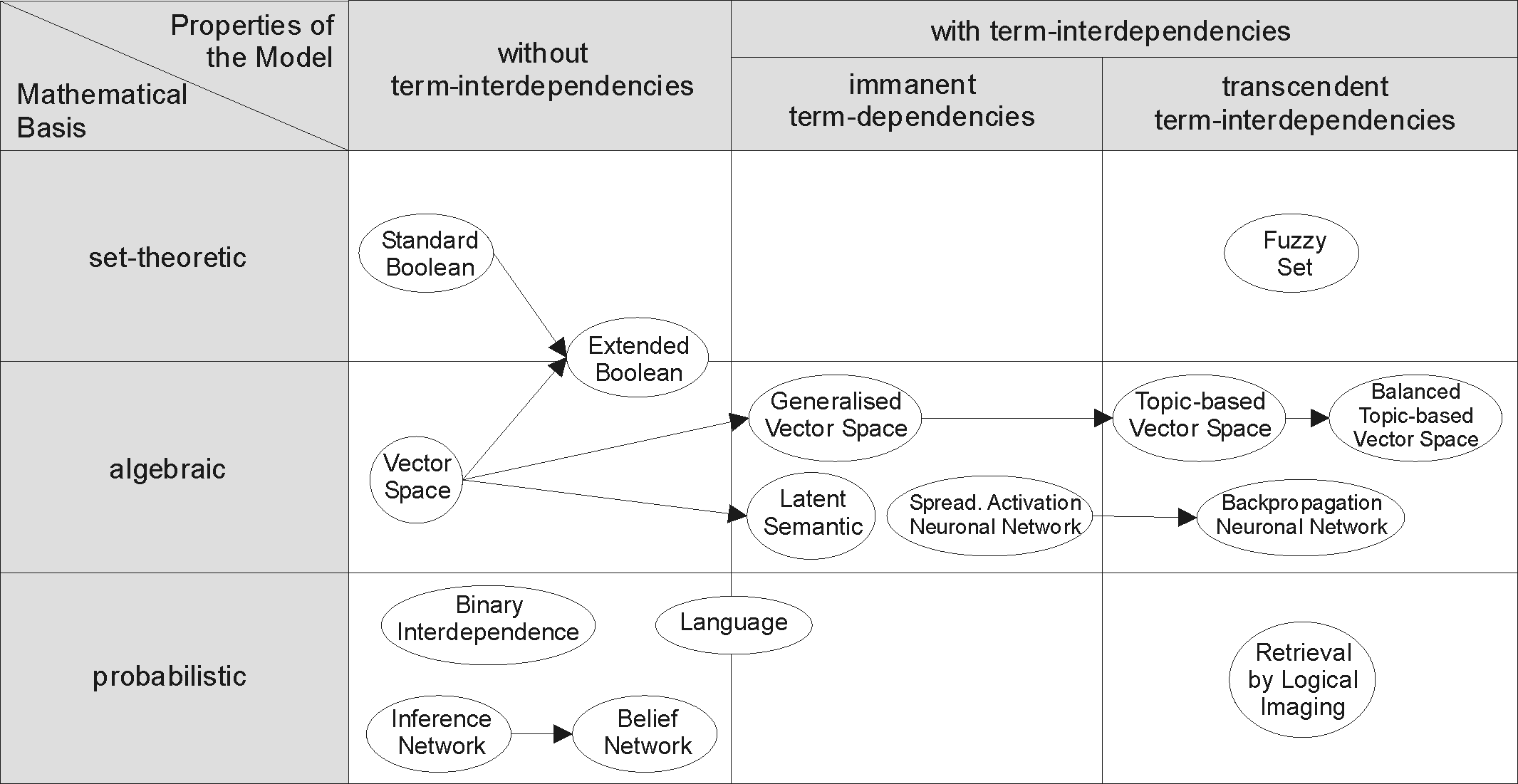|
Query Likelihood Model
The query likelihood model is a language model used in information retrieval. A language model is constructed for each document in the collection. It is then possible to rank each document by the probability of specific documents given a query. This is interpreted as being the likelihood of a document being relevant given a query. Calculating the likelihood Using Bayes' rule, the probability P of a document d, given a query q can be written as follows: : P(d, q) = \frac Since the probability of the query P(q) is the same for all documents, this can be ignored. Further, it is typical to assume that the probability of documents is uniform. Thus, P(d) is also ignored. : P(d, q) \propto P(q, d) Documents are then ranked by the probability that a query is observed as a random sample from the document model. The multinomial unigram language model is commonly used to achieve this. We have: : P(q, M_d) = K_q \prod_ P(t, M_d)^ ,where the multinomial coefficient is K_q = L_q!/(tf_!t ... [...More Info...] [...Related Items...] OR: [Wikipedia] [Google] [Baidu] |
Language Model
A language model is a probability distribution over sequences of words. Given any sequence of words of length , a language model assigns a probability P(w_1,\ldots,w_m) to the whole sequence. Language models generate probabilities by training on text corpora in one or many languages. Given that languages can be used to express an infinite variety of valid sentences (the property of digital infinity), language modeling faces the problem of assigning non-zero probabilities to linguistically valid sequences that may never be encountered in the training data. Several modelling approaches have been designed to surmount this problem, such as applying the Markov assumption or using neural architectures such as recurrent neural networks or transformers. Language models are useful for a variety of problems in computational linguistics; from initial applications in speech recognition to ensure nonsensical (i.e. low-probability) word sequences are not predicted, to wider use in machine tran ... [...More Info...] [...Related Items...] OR: [Wikipedia] [Google] [Baidu] |
Information Retrieval
Information retrieval (IR) in computing and information science is the process of obtaining information system resources that are relevant to an information need from a collection of those resources. Searches can be based on full-text or other content-based indexing. Information retrieval is the science of searching for information in a document, searching for documents themselves, and also searching for the metadata that describes data, and for databases of texts, images or sounds. Automated information retrieval systems are used to reduce what has been called information overload. An IR system is a software system that provides access to books, journals and other documents; stores and manages those documents. Web search engines are the most visible IR applications. Overview An information retrieval process begins when a user or searcher enters a query into the system. Queries are formal statements of information needs, for example search strings in web search engines. In ... [...More Info...] [...Related Items...] OR: [Wikipedia] [Google] [Baidu] |
Likelihood Function
The likelihood function (often simply called the likelihood) represents the probability of random variable realizations conditional on particular values of the statistical parameters. Thus, when evaluated on a given sample, the likelihood function indicates which parameter values are more ''likely'' than others, in the sense that they would have made the observed data more probable. Consequently, the likelihood is often written as \mathcal(\theta\mid X) instead of P(X \mid \theta), to emphasize that it is to be understood as a function of the parameters \theta instead of the random variable X. In maximum likelihood estimation, the arg max of the likelihood function serves as a point estimate for \theta, while local curvature (approximated by the likelihood's Hessian matrix) indicates the estimate's precision. Meanwhile in Bayesian statistics, parameter estimates are derived from the converse of the likelihood, the so-called posterior probability, which is calculated via Baye ... [...More Info...] [...Related Items...] OR: [Wikipedia] [Google] [Baidu] |
Bayes' Theorem
In probability theory and statistics, Bayes' theorem (alternatively Bayes' law or Bayes' rule), named after Thomas Bayes, describes the probability of an event, based on prior knowledge of conditions that might be related to the event. For example, if the risk of developing health problems is known to increase with age, Bayes' theorem allows the risk to an individual of a known age to be assessed more accurately (by conditioning it on their age) than simply assuming that the individual is typical of the population as a whole. One of the many applications of Bayes' theorem is Bayesian inference, a particular approach to statistical inference. When applied, the probabilities involved in the theorem may have different probability interpretations. With Bayesian probability interpretation, the theorem expresses how a degree of belief, expressed as a probability, should rationally change to account for the availability of related evidence. Bayesian inference is fundamental to Baye ... [...More Info...] [...Related Items...] OR: [Wikipedia] [Google] [Baidu] |
Bag Of Words
The bag-of-words model is a simplifying representation used in natural language processing and information retrieval (IR). In this model, a text (such as a sentence or a document) is represented as the bag (multiset) of its words, disregarding grammar and even word order but keeping multiplicity. The bag-of-words model has also been used for computer vision. The bag-of-words model is commonly used in methods of document classification where the (frequency of) occurrence of each word is used as a feature for training a classifier. An early reference to "bag of words" in a linguistic context can be found in Zellig Harris's 1954 article on ''Distributional Structure''. The Bag-of-words model is one example of a Vector space model. Example implementation The following models a text document using bag-of-words. Here are two simple text documents: (1) John likes to watch movies. Mary likes movies too. (2) Mary also likes to watch football games. Based on these two text ... [...More Info...] [...Related Items...] OR: [Wikipedia] [Google] [Baidu] |

